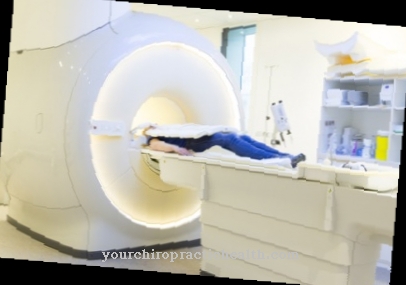The Bypass surgery is a complex procedure on the open heart, during which the blocked blood flow to the heart is restored. The risk of heart attacks is thus reduced and life expectancy is increased.
What is bypass surgery?

A Bypass surgery is an operation on the heart artery to restore blood flow to the heart muscle. Here, blood is collected through a side channel at the blocked area of the artery and passed on to the heart.
The surgeon uses a piece of vein from the patient's leg, arm, chest, or abdomen, connects it to the heart and artery, thereby bypassing the blockage of blood flow. After the bypass operation, the normal function of the heart muscle is guaranteed again. It is one of several ways to treat and cure heart disease.
The bypass surgery reduces the symptoms caused by clogged arteries. These include pain and stinging in the chest and upper body, as well as shortness of breath and reduced exercise capacity. The bypass surgery reduces the risk of further heart disease and death from a heart attack.
Function, effect & goals
A Bypass surgery While it can improve the direct symptoms of cardiac artery disease, it does not resolve the cause of the disease. A common cause of arterial blockage is an unhealthy lifestyle. After a bypass operation, it is imperative to switch to reduce the risk of recurring problems.
Before the operation, the doctor will give several instructions regarding activities, diet and medication intake. A number of precautionary examinations are carried out, e.g. x-rays, blood tests, electrocardiograms, coronary angiography (an x-ray that shows the inflows to the heart). Most patients are admitted to the hospital on the morning of the bypass surgery.
In some cases, bypass surgery is also performed as an emergency surgery after a heart attack. For the weeks following the surgery, the patient should keep in mind that it will take approximately 6 weeks before they can return to work, drive or do everyday tasks. The bypass surgery usually takes three to six hours and requires general anesthesia. The length depends on the number of bypasses that have to be laid.
Most bypass surgeries are performed through a long incision in the chest while blood flow is ensured through a heart-lung machine. The chest is opened at the sternum and the heart is exposed. The muscle is then temporarily stopped and the heart-lung machine takes over the supply. Veins are removed with incisions in the arm, leg or chest and connected to the affected areas of the arteries.
In some cases, bypass surgery is performed on the beating heart, or without opening the chest, through a small incision and the use of computer-controlled robotic arms. The bypass operation is a complex procedure and then the patient will spend 2 more days under supervision in the intensive care unit. The ventilation hose will be connected for a few more hours, which limits communication.
After a week, the patient can leave the hospital, but it will be a few more weeks before they can go back to work or do only minor physical tasks.
Risks & dangers
Since the Bypass surgery When the procedure is open-hearted in the majority of cases, a number of complications can arise during the procedure. These include: bleeding, cardiac arrhythmias.
Less common problems include: infection of the surgical wound; Memory loss or problems with thinking (these should subside 12 hours after bypass surgery); Kidney failure; Stroke; Heart attack (when a blood clot comes off soon after surgery).
The likelihood of these complications depends on the physical constitution of the patient prior to the bypass surgery. In a conversation with the doctor, the individual dangers should be discussed with the patient.
If the bypass operation is planned for a long time and well prepared, the risk of the problems listed should be low. Emergency surgery using this procedure is much more risky, or if the patient has other drugs in their blood. Additional illnesses such as emphysema, kidney disease, diabetes or blocked arteries in the legs also increase the risk of complications.













.jpg)

.jpg)
.jpg)











.jpg)